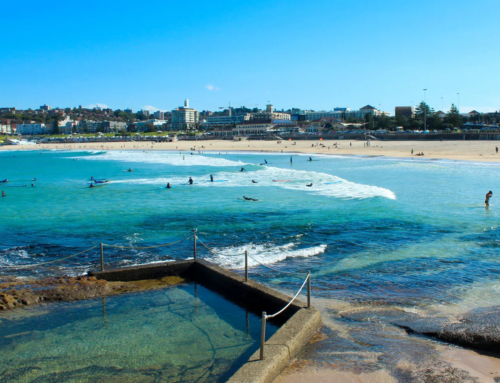Made famous by the bright lights at Times Square in New York and Piccadilly Circus in London, Out-of-Home (OOH) advertising has been used by brands since the 1800s. Traditionally, outdoor advertising has been restricted to printed static billboards, either by the side of the road, at bus stops, train stations and around retail areas to name a few. Since then, it has evolved into digital billboards with eye-catching visuals to disrupt audiences, capture their full attention and encourage engagement.
In 2021, the latest innovative technology means we can now go one step further, integrating programmatic buying strategies into Digital Out-of-Home (DOOH) advertising to minimise wastage, increase targeting abilities and make every advertising dollar count. Keen to learn more? We reveal eight core benefits of Digital Out-of-Home advertising:
Easier Access and Less Competition for Brands
A major challenge of printed billboards is that they are limited by a definite amount of supply in the market. However, the introduction of DOOH means more ads can loop at the same location, allowing brands to access more locations and have less competition bidding for advertising real estate. As a result, OOH has seen rapid growth and increasing demand over the past few years, with over $1 billion spent on OOH advertising in 2020 alone, 60 per cent of which are digital screens.
More Screens in Key Locations
Without the hassle of having to be printed and installed regularly, more digital screens requiring less maintenance have been launched in key locations. Majority of DOOH screens can be found at shopping centres, gyms, restaurants, bars, office buildings and petrol stations to name a few. There are also point of sale opportunities such as at convenience stores, grocery stores and pharmacies.
Increased Creative Capacity
The creative capacity of DOOH includes video, augmented reality, it can even be interactive! This ease of creative execution means brands can connect with audiences, leading to high impact campaigns and boosting brand recall.
Contextually Relevant
Helping to increase campaign ROI, contextually relevant locations allow brands to improve their ad effectiveness, limit wastage and reach interested consumers. For example, activewear brands and health food brands could advertise in locations such as gyms.
Budget Flexibility
DOOH media can be bought like other digital channels, meaning brands can increase spends or decrease spends easily. This ability can be strategically beneficial, such as alcohol brands increasing their spends on Fridays and weekends.
A New Benchmark in Audience Targeting Abilities
Traditionally, printed billboards had no targeting at all other than their location, leading to a great deal of advertising wastage. One of the most exciting developments in DOOH is the myriad of ways audiences can be targeted. The targeting of DOOH includes day of week by day, and time of day by the hour, for example coffee brands could choose to advertise only in the mornings. Geo-targeting postal codes allows brands to maximise geographic exposure without the expense of having to purchase static billboards in multiple areas. There is even point radius targeting ability, for example latitude/longitude area near a cinema to advertise a new release movie.
Using anonymised GPS location data, advertisers can understand where consumers go, how they spend their time and what routes they take. From this data, we can identify patterns to build specific audiences, activate targeting via heatmaps and measure success based on campaign exposure. We can even integrate the first party device ID data of your business.
Brands can even utilise weather trigger targeting to deliver their contextually relevant message to audiences, such as Peters Ice Cream ads appearing during a heatwave. DOOH also brings retargeting abilities, as after a consumer is exposed to the DOOH ad, their device ID is captured so they can be retargeted on mobile.
Next Level Reporting
While there is little data to be gleaned from printed billboards, DOOH provides accurate, data-rich reporting in near-time. This allows ROI to be measured in more detail as well as the retargeting opportunities mentioned above.
Powered by Programmatic Technology
Programmatic technology allows OOH buyers to make more streamlined and highly targeted OOH buys. When you purchase DOOH programmatically, it eliminates the lag and barriers to entry faced by traditional OOH. Printed OOH unfortunately must be bought months in advance due to production timeframes, offers limited reporting, a lack of targeting and has high minimum spends -creating a barrier to entry for many businesses.
An Opportunity for Brands
DOOH is quickly rising in popularity with brands across Australia, and is expected to rise by 19.2% in 2021 alone. With this in mind, there is currently an opportunity for brands to secure premium placements at affordable rates before demand starts to increase prices.
Best Media Rates is the trusted name in delivering strategic, value-for-money media campaigns for our clients. We actively source new media opportunities, distress rates and premium placements at sought-after locations to ensure maximum exposure and foot traffic. Speak to our experienced team about how your business can maximise brand awareness at an affordable rate, by calling 1300 81 44 88 alternatively via email at [email protected]
References:
https://www.bandt.com.au/the-potential-of-digital-out-of-home-advertising-powered-by-programmatic/



